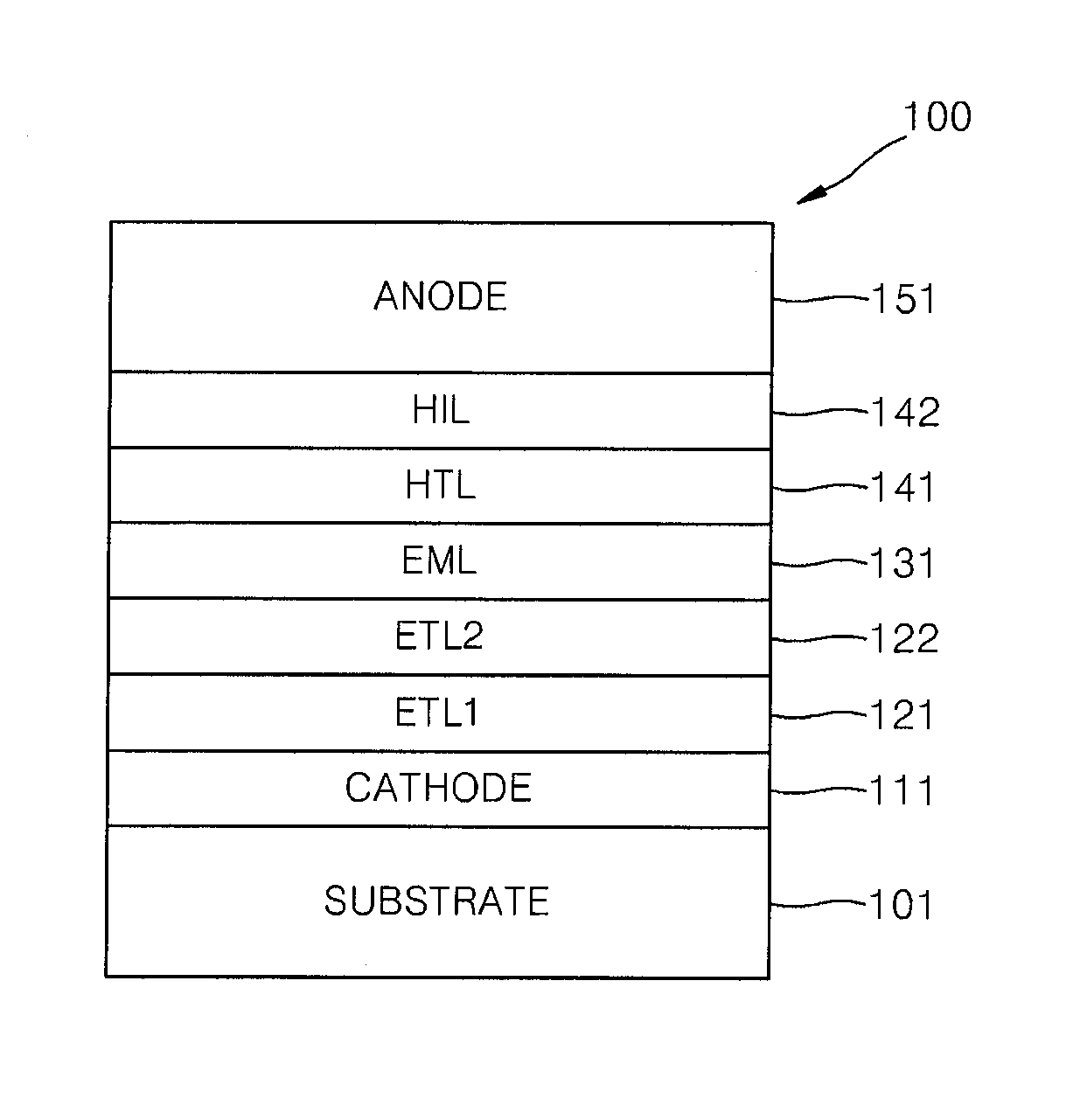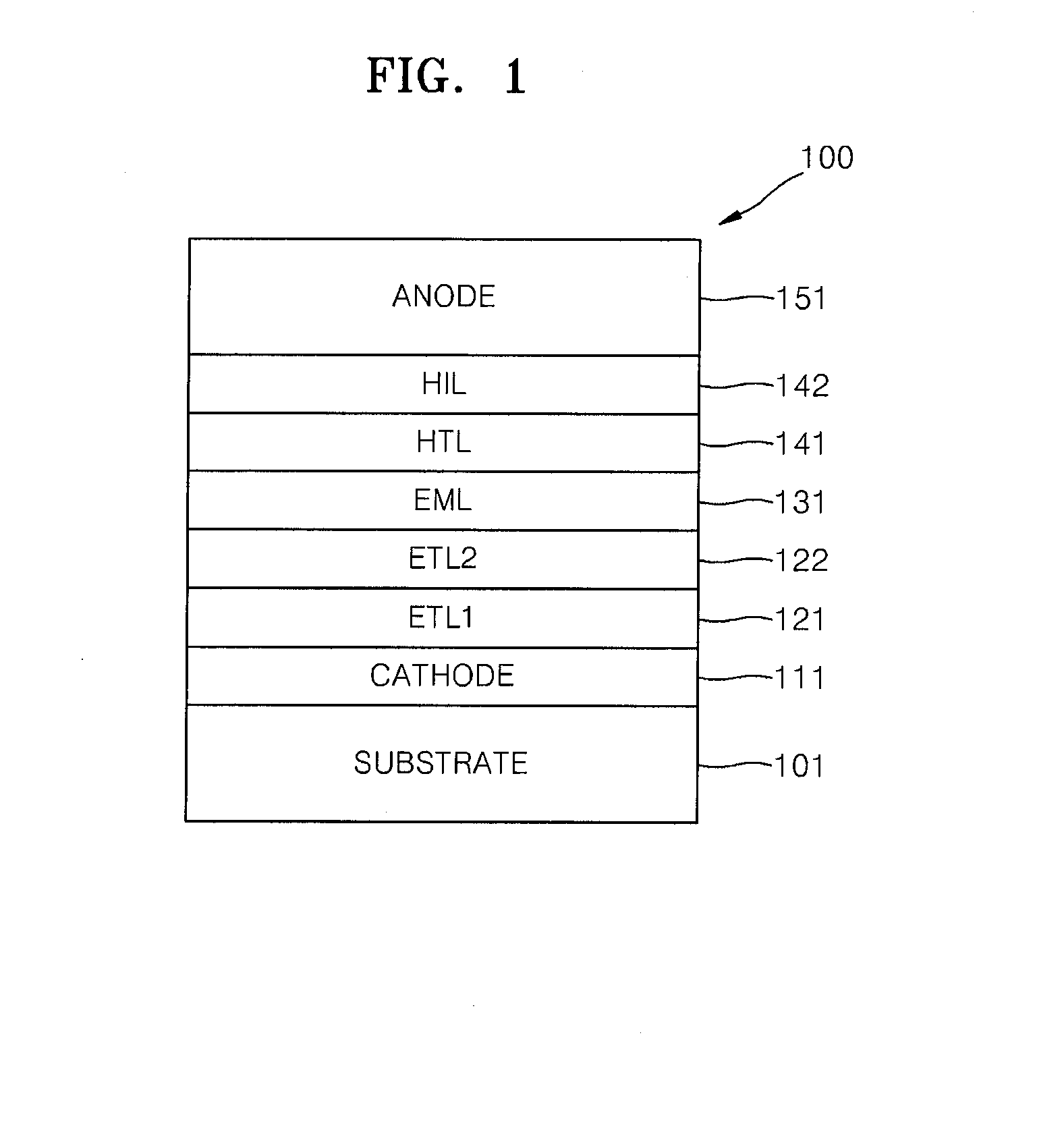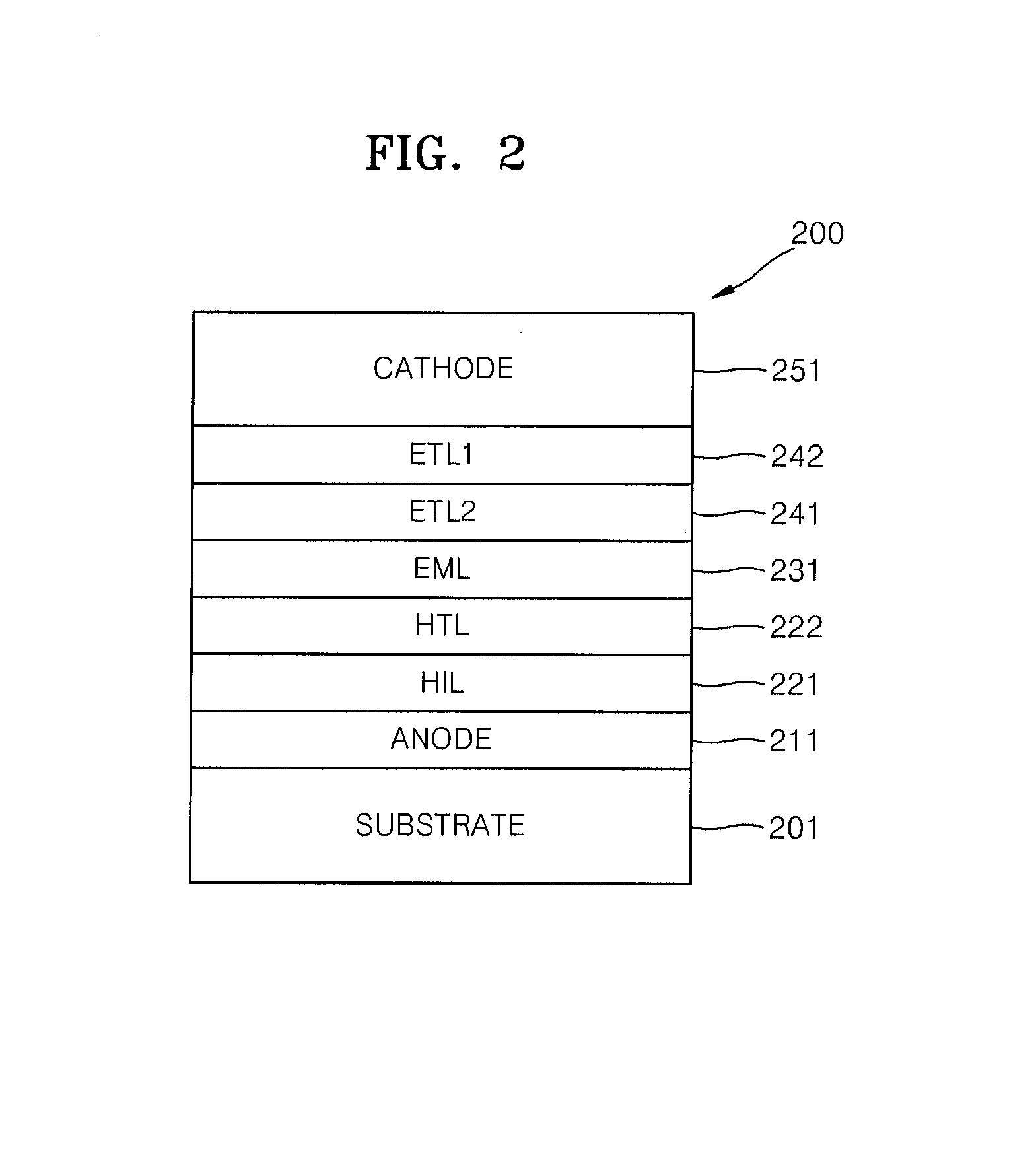Organic light-emitting device
a light-emitting device and organic technology, applied in the direction of thermoelectric devices, solid-state devices, organic chemistry, etc., can solve the problems of unsuitable large-screen displays and damage to the organic layer underlying the ito cathode, and achieve the effect of improving electron injection characteristics and electron mobility
- Summary
- Abstract
- Description
- Claims
- Application Information
AI Technical Summary
Benefits of technology
Problems solved by technology
Method used
Image
Examples
example 1
[0084]An ITO-coated glass substrate was cut to a size of 50 mm×50 mm×0.7 mm, and then ultrasonically cleaned with alcohol and then pure water, each for 5 minutes, to prepare the cathode layer on the glass substrate.
[0085]A solution of 0.5 wt % of Merck Green (SPG-01T, Merck Advanced Technologies Limited) and 0.005 wt % of N-DMBI (1 wt % with respect to the weight of Merck Green) dissolved in toluene was prepared. This solution was spin-coated on the ITO glass substrate to form a first electron transport layer containing a mixture of Merck Green: N-DMBI (about 1 wt %) to have a thickness of about 30 nm.
[0086]A TPBi layer having a thickness of about 30 nm was formed by thermal deposition on the first electron transport layer containing Merck Green and N-DMBI to form a second electron transport layer.
[0087]CBP containing 8 wt % of Ir(ppy)3 was vacuum-deposited on the TPBi layer to form an emission layer including an Ir(ppy)3:CBP layer having a thickness of about 10 nm. Afterward, a hol...
example 2
[0090]An OLED was manufactured in the same manner as in Example 1, except that 3 wt % of N-DMBI, instead of 1 wt % of N-DMBI, was used in forming the first electron transport layer.
example 3
[0091]An OLED was manufactured in the same manner as in Example 1, except that 5 wt % of N-DMBI, instead of 1 wt % of N-DMBI, was used in forming the first electron transport layer.
PUM
 Login to View More
Login to View More Abstract
Description
Claims
Application Information
 Login to View More
Login to View More - R&D
- Intellectual Property
- Life Sciences
- Materials
- Tech Scout
- Unparalleled Data Quality
- Higher Quality Content
- 60% Fewer Hallucinations
Browse by: Latest US Patents, China's latest patents, Technical Efficacy Thesaurus, Application Domain, Technology Topic, Popular Technical Reports.
© 2025 PatSnap. All rights reserved.Legal|Privacy policy|Modern Slavery Act Transparency Statement|Sitemap|About US| Contact US: help@patsnap.com



